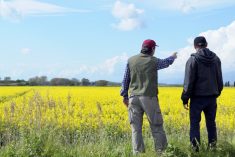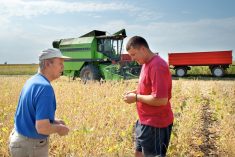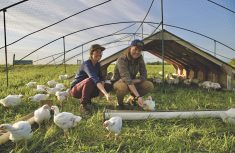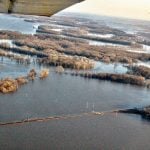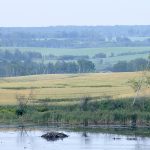“Slap. Slap. Slap.” I adjust the propel-lor levers on the twin engine airplane. A steady drone results. The airplane feels like a butterfly as I fly north along the mighty Mackenzie River from Norman Wells, Northwest Territories, toward the small aboriginal village of Fort Good Hope.
The scenery is breathtaking — huge cliffs, mountain ranges and no sign of human habitation for miles and miles. My map tells me that Fort Good Hope is located 20 miles south of the Arctic Circle. Soon I see the village perched high above the river. I locate the airport, lower the wheels and prepare for landing. I have come to assist with a summer Bible school for the children of the community. Sisters Joan and Pauline from the Roman Catholic mission meet me. We transfer blankets and quilts donated by people in the south, along with craft items for the Bible school, to the sisters’ truck.
Read Also

Rural health co-ops give a boost to Quebec’s struggling health care system
Health care co-ops offer services to Quebec’s rural residents. Photo credit: Co-op Ici Santé
During the short drive to town I notice “smoke houses” in the shape of teepees. They are used for tanning hides and smoking wild meat and fish. Obtaining food here is challenging and expensive. People rely on hunting and fishing and on vegetables raised during a short growing season. A freight plane brings groceries and supplies from Yellowknife. Barges follow the Mackenzie from Hay River in the summer, and some people make long and challenging treks on winter roads.
The Mackenzie River is two miles wide at this point. Millions of gallons of water, collected in a huge watershed east of the Rocky Mountains, move relentlessly to the Arctic Ocean. Water has been flowing past this spot every minute since the last ice age.
The long evenings are filled with laughter as people gather for scrabble, cards and country music. Stories abound. Like farmers in the south, people here are keen observers of nature. Summers and winters are warmer than in earlier years. A few weeks ago two seals were sighted in a tributary of the Mackenzie near Fort Good Hope. The elders do not remember seals travelling this far south of the Arctic Ocean. Magpies and mosquitoes have been sighted in the far north for the first time. The manager of the Norman Wells museum told me she was surprised to see a porcupine. A polar bear was sighted in one of the villages of the area. Their normal habitat is further north.
Apparently grizzly and polar bears are mating. People wonder how the unusual combination will behave. With typical aboriginal humor, they try out names for the new bears: ‘golars’ or ‘pizzlys’?
Before taking off I ensure the aircraft has enough fuel to fly 400 miles to Yellowknife. As I gaze on the vastness of the terrain, I reflect on my experience. The children who came to Bible school are descendants of people who have lived in the north for thousands of years. Their unbounded energy tired me out, and their quiet sense of God as their creator and life as unity with creation inspired me. I reflected on words from Grandad’s Prayer of the Earthby Douglas Wood: “All the beings of the world pray,” said Wood’s grandad, “as they slip through the forest or sparkle in the water… as they climb mountainsides or soar into the clouds or burrow into the earth. Each living thing gives its life to the beauty of all life… Quietly watching the sunrise, feeling the slow turning of the earth and saying hello to a new day is one of the oldest prayers.”
SuggestedScripture:Psalm46,Revelation22:1-5
Rod Andrews is a retired Anglican bishop. He lives in Saskatoon.



